Key Figures in the History of the Ironbridge Gorge
People often ask who started the Industrial Revolution? Where did the Industrial Revolution start? Why is Ironbridge regarded as the birthplace of the Industrial Revolution?
The answer to some of these questions is revealed with the story of the great innovators and ironmasters who lived and worked in the Ironbridge Gorge.
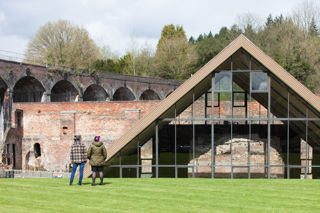
Abraham Darby I
Abraham Darby I is famous for pioneering the use of coke as the fuel to smelt iron (instead of charcoal). This momentous development made possible a vast increase in iron production in Britain, part of the series of dramatic changes known as the Industrial Revolution.
Darby was born on 14 April 1678 near Dudley in the West Midlands, into a practising Quaker family.
His early experiences working in the brewing and brass industries inspired innovations when he moved into the iron industry.
In 1705 he leased and repaired the blast furnace at Coalbrookdale (now known as the Old Furnace). It was here that in 1709 he perfected his technique for using coke as a fuel to smelt iron.
Abraham Darby I died on 8 March 1717 (aged 39). His legacy and industry were continued by Abraham Darby II, his son.
Quakers at this time considered that having your portrait taken was a show of vanity, so we do not know what members of the early generations of the Darby family looked like.
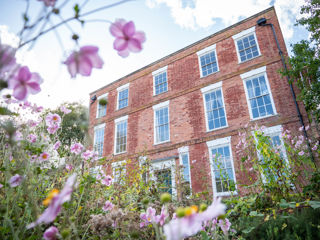
Abraham Darby II
Building on this father’s legacy, Abraham Darby II was largely responsible for the great expansion of the Coalbrookdale Company and wider iron industry across the West Midlands and Shropshire.
Darby II was born in Coalbrookdale in 1711, and was aged only 6 when his father died. In his father’s absence, Quaker friends Richard Ford and Thomas Goldney (also shareholders in the company) took charge, and in 1734 Darby II became Ford’s assistant.
Several advances took place during this period including casting the world’s first cast-iron steam engine cylinders, casting the first iron flanged railway wheels, and using a Newcomen Engine to return water from the lower works to the upper works, thereby increasing production capacity, regarded as the first time that steam power was used in the iron industry.
By the 1750s, Darby II had begun to make pig iron suitable for use in the forges (key if the works were to dominate the iron industry). During the next four years, Darby II had nine blast furnaces built within just 6km of Coalbrookdale, and Coalbrookdale became the main producer of iron in Britain.
On his death in 1763, the Coalbrookdale Company was entrusted to Richard Reynolds, Darby’s son-in-law who was married to one of his daughters, Hannah Darby. Reynolds ran the company until Darby II’s eldest son, Abraham Darby III, was old enough to take control of the family business.
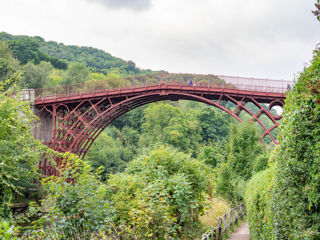
Abraham Darby III
Abraham Darby III followed in the footsteps of his father and grandfather before him, and became a great ironmaster and inventor. He is best known for building the world’s first iron bridge, which acted as a catalyst for the architectural use of cast-iron.
Darby III was born in Coalbrookdale. While he was growing up, Richard Reynolds oversaw the Coalbrookdale Company, where Darby III worked as an apprentice. When he reached 18 years of age in 1768, Darby III was old enough to manage the Coalbrookdale Company.
During his time in charge, he installed two steam engines at Horsehay and Ketley ironworks, and in 1776 he acquired the lease of the Madeley Wood Company, with its Bedlam Furnace. However, he is perhaps most famous for building the Iron Bridge.
The iron used to make much of the bridge was cast at the Bedlam Furnace that Darby had acquired a few years earlier. This iconic Grade II listed furnace, though now dormant, is still available to visit today.
In 1789 Darby died. The Iron Bridge had cost more than Darby anticipated to build, and having taken financial responsibility for any overspend on the project, upon his death he was in debt. His estate and possessions were subsequently sold.
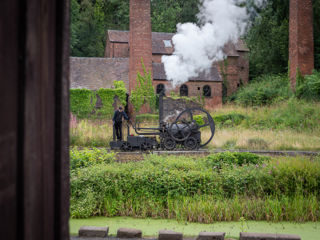
The Darby Women
After Abraham Darby III died in 1791, women from the Darby family oversaw the management of the Coalbrookdale Company.
Equality between men and women is central to Quakerism, and girls born into Coalbrookdale’s Quaker families were able to undertake endeavours their non-Quaker peers couldn’t. This included becoming ministers in their faith, businesswomen, and activists and political campaigners who championed causes like the abolitionist movement and prison reform.
Due to this equality, they held shares in the companies and when male family members died they were able to continue doing so.
The Quaker women from the Darby family made a significant impact in the industries and businesses of Coalbrookdale. Under the management of the Quaker women of Coalbrookdale, the world’s first steam railway locomotive, the Trevithick, was developed by the Coalbrookdale Company and the Coalbrookdale Bank was established.
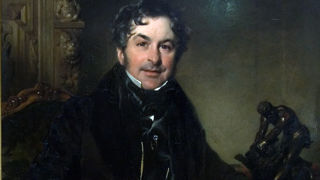
Francis Darby I
Francis Darby was one of the two sons of Abraham Darby III and his wife Rebecca Smith. Rebecca was passionate about music and fine arts.
Francis Darby introduced ornamental castings such as vases, garden furniture, fountains and gates to Coalbrookdale in the mid-1830s. This was the first time Coalbrookdale had moved away from pure iron products to art. These items are still celebrated today at Coalbrookdale Museum of Iron, Coalport China Museum and Jackfield Tile Museum.
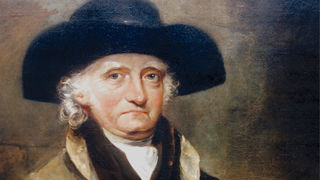
Richard Reynolds
Like Abraham Darby I, Richard Reynolds was a Quaker. He was the son of an iron merchant whose firm Daniels and Reynolds was an important customer of the Coalbrookdale Company.
After moving to Coalbrookdale in 1756, he soon became the manager of Ketley ironworks, and in 1757 he became a partner of the Coalbrookdale Company.
Reynolds married Abraham Darby II’s daughter Hannah, and when Darby II died, Reynolds became custodian of the Coalbrookdale Company until Abraham Darby III was old enough to take over.
Under Reynolds' direction, the Coalbrookdale Company saw many developments, including casting the first iron nails and encouraging the use of coal in forging wrought iron.
Separately, Reynolds also created ‘Sabbath Walks’, some of the first public walks in Britain, designed to benefit the workers at Coalbrookdale. He also built houses and schools for workers and their children, in the Coalbrookdale area.
After losing his wife, son and daughter-in-law, in 1804 he left Coalbrookdale.
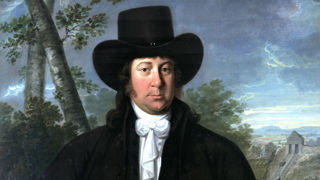
William Reynolds
William Reynolds, the son of Richard Reynolds and Hannah Darby, was born in Ketley, near Coalbrookdale. He was the pioneer of a number of innovations in ironmaking, canal building, engineering and the chemical industry.
Reynolds became a partner of the Coalbrookdale Company in 1781. He was involved in building the world’s first cast-iron aqueduct, which was designed by Thomas Telford and built in 1796 to carry the Shrewsbury Canal across the River Tern.
Reynolds was also the creator of the ‘new town’ of Coalport in the 1790s, and instigated the digging of the Tar Tunnel. There he built an inclined plane to allow the transportation of coal between the upper and lower levels of the Shopshire Canal.
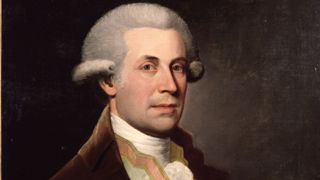
Thomas Farnolls Pritchard
Thomas Farnolls Pritchard was a Shrewsbury-born joiner turned architect whose most famous project was the world’s first Iron Bridge.
In 1773 that Pritchard saw the need for a bridge to connect the two banks of the River Severn at Coalbrookdale. He designed the first plans for what became the Iron Bridge, and worked alongside Abraham Darby III, the ironmaster who constructed the bridge.
Work began on the Iron Bridge in 1777 and was completed in 1779. Sadly, Pritchard died the year before the bridge was completed, so never got to see the final structure. It is known, however, that his brother Samuel Pritchard was paid £39 19s 0d “for his late Bror. T. F. Pritchard’s Bill”.
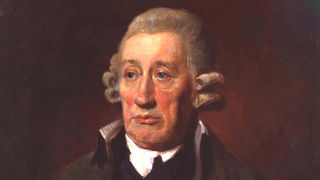
John Wilkinson
John Wilkinson was an inventor and ironmaster associated with a series of engineering inventions, and with the building of the Iron Bridge.
He first moved to Shropshire in 1757, and took over management of the New Willey ironworks. He soon became a managing partner of Bersham (1763) and built a new ironworks in Bradley, Staffordshire (1760s).
In 1774 Wilkinson developed a new cannon boring machine. It was hugely successful and the government ordered all cannons to be made to Wilkinson’s design.
The following year Wilkinson invented a machine to accurately bore cylinders for steam engines, and in 1776 he installed the first Watt steam engine to direct air into the Coalbrookdale blast furnaces.
Wilkinson was also one of the investors in the Iron Bridge, which Abraham Darby III built between 1777 and 1779.
Upon his death in 1808, John ‘Iron Mad’ Wilkinson was buried in an iron coffin.
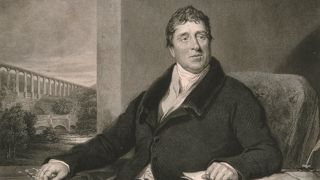
Thomas Telford
It is often, and wrongly, believed that Thomas Telford built the Iron Bridge.
Telford was a Scottish civil engineer, architect and stonemason, who is widely celebrated for his work on several road and canal projects across Shropshire and the wider UK.
Telford moved to Shropshire in 1786. During his time in the county, he started experimenting with different materials, including the iron that was being cast in Coalbrookdale. Working with the Coalbrookdale Company, Telford designed the world’s first aqueduct, which was built by ironmaster William Reynolds in 1796.
Telford’s main achievement was the creation, and recognition of, an entire profession: civil engineering. In fact, Telford was elected as the first President of the Institution of Civil Engineers, a post he held for 14 years until he died in 1834.
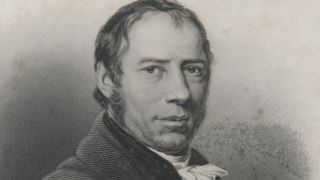
Richard Trevithick
Richard Trevithick was an inventor. Between 1802 and 1803 Trevithick visited Shropshire, specifically Coalbrookdale, and became a client of the Coalbrookdale Company. The company, encouraged by William Reynolds, began building the world’s first steam railway locomotive, based upon designs by Trevithick.
The Coalbrookdale locomotive that Trevithick commissioned followed a series of railway-related innovations seen at Coalbrookdale, such as the casting of the first iron wheels and rails in 1729 and 1767 respectively.
When Reynolds died in 1803 the construction of the locomotive ended. It is not known if the engine was ever run, or if it was, how successfully. However, this locomotive played a significant role in the development of portable steam powered engines, an invention that was well ahead of its time, as Trevithick’s locomotive was designed and built 26 years before Stephenson’s Rocket.
In 1979, researchers gathered historic and contemporary evidence after it was suggested a replica of the Coalbrookdale locomotive be made. Between 1989 and 1990, a full-scale working replica was built and officially launched at Blists Hill Victorian Town on 18 July 1990. This replica still runs on occasion today.

Sign up to our mailing list
Register your email with us and we’ll keep you up-to-date with news, events and offers.
